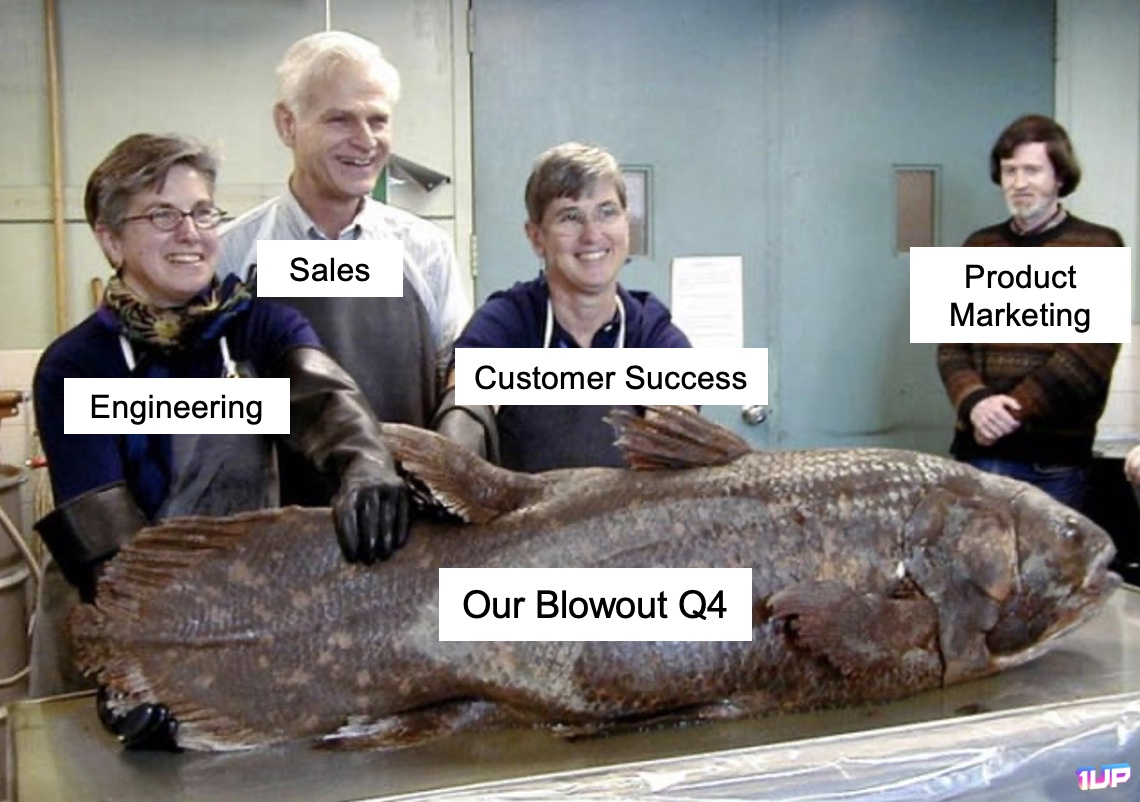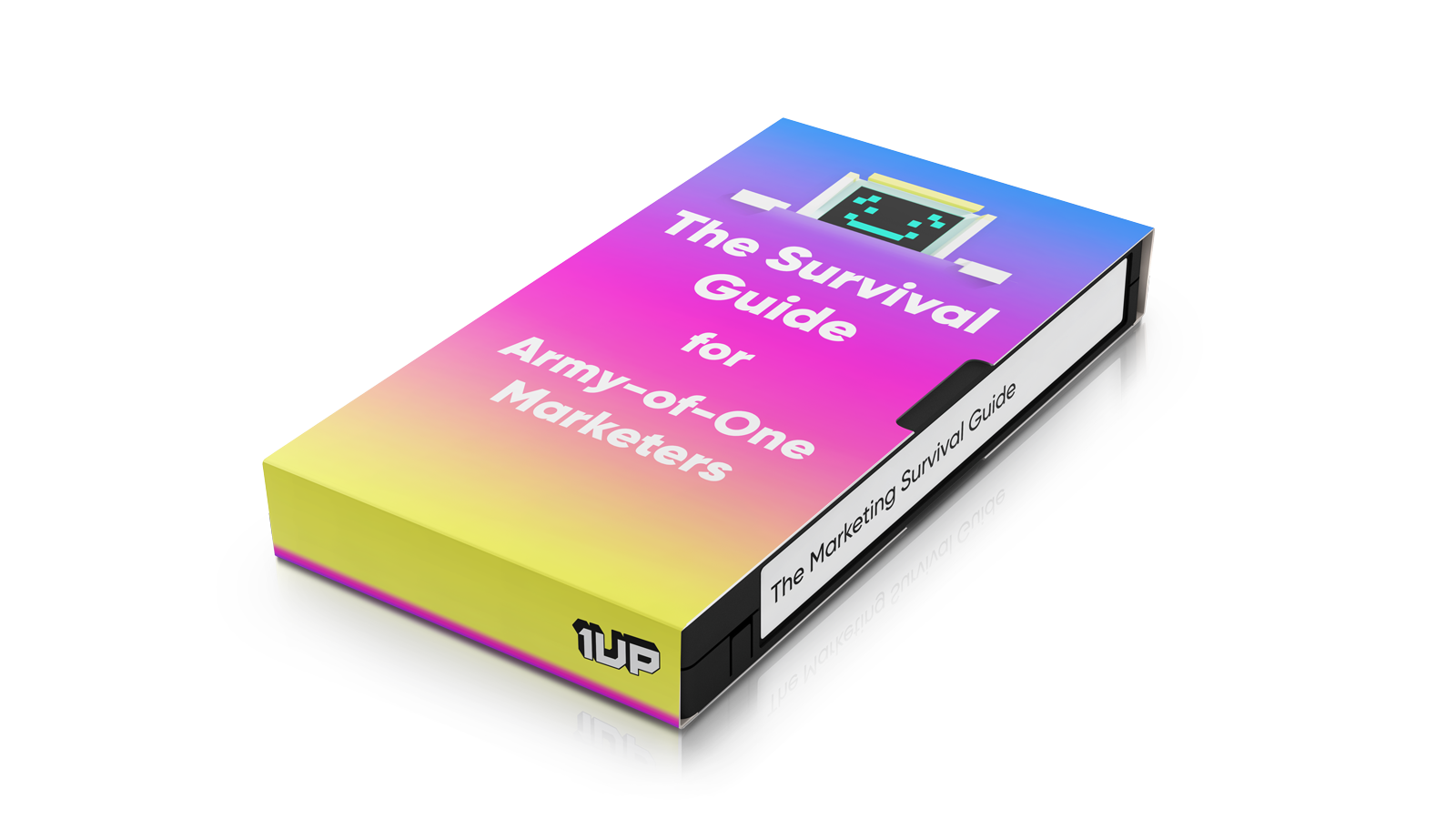Presenting to your Board of Directors can be difficult.
Board meetings are a long and arduous experience. The tone of a meeting can quickly change from sleepy and boring, to memorable and exciting. You never know if a chair will get thrown and a human resigns. (Or a human gets thrown out and a chair resigns.)
Anything can happen!
That’s why it’s important to cut through the noise and deliver a crystal-clear picture of the state of your marketing program. Unfortunately, we as marketers have a tendency to overdo it on metrics. We thrive on numbers and live in metrics-heavy dashboards. Some of us even see CTRs in our sleep. 💤
The truth is…most people’s eyes glaze over when these metrics come up.
Understand that board members are overwhelmed with information. They can spend 3-6 hours in just one of these sessions. And, chances are, yours isn’t the only board meeting they’re attending this week or the only deck they’re reading today. Board decks are full of numbers, charts, and projections. Throwing a ton of marketing metrics at them won’t help you convey a meaningful update – and the latter is kind of the point of a board meeting.
Here are a few ways to make the marketing part of your board presentation stand out…
Stop Using These Acronyms
SQL, PQL, MQL, SHL… “WTF” is probably what your audience will be thinking if you drown them in these.
These terms are hard enough to follow if you’re working in marketing. Now imagine you’re on the boards of 5 companies and each of them has a different definition for what a “lead” is. It’s mindnumbing.
You can’t expect everyone to remember what your definition of an MQL is or why it matters. So ditch the 3-letter acronyms from your deck entirely, or include them in an appendix if you absolutely must have them.

The only metric your board truly wants to hear about is revenue.
Let me repeat that but louder and in purple.
The only metric your board truly wants to hear about is revenue.
By looking through that lens it becomes easier to focus your presentation on the numbers that matter.
- How much revenue was attributed to marketing this quarter?
- How much are we projecting next quarter?
- What is our target for marketing-sourced revenue this year?
- How are we tracking against that target?
- Why do we think we’ll succeed in hitting that number?
These metrics should be the central focus of your presentation. Everything else is supplementary.
Choose One Specific Theme They Can Walk Away With
You want your board to remember something that you can call back to at the next meeting.
Choose one theme important enough that they will remember it from a 3 hour meeting. For example, it might be a major upcoming trade show or a new product launch.
It’s even better if the theme has some measurable outcome. It could be something as simple as “We’re focused on making all 5 new marketing hires by the next board meeting.” or “We expect to generate $100,000 in qualified pipeline from this upcoming event.”
You want this theme to serve as the backdrop for the key revenue milestones you are driving. This gives your board a measure of progress to think about beyond just dollar signs.
Give Your Board Members Homework
Seriously – give some or all of the board members an assignment they can take with them. It might be a request for an introduction, help with recruiting a key hire, or just asking them to share your next big post on social media.
Board “asks” are a great way to keep them engaged during the long stretch of time between board meetings. No request should be considered too big or too small.

In her article Gaining the Confidence of the Board, Lisa Ames writes that board members should be willing to roll up their sleeves and help you as they are already invested in your success. As a marketing leader you should be taking advantage of this dynamic.
Avoid Vanity Metrics
Here is a list of metrics that you’re likely familiar with:
- Website traffic
- Social media followers
- SEO rankings
- Email open rates
- PR stats such as Share of Voice
- Google Ad impressions & CTRs
- How many RFPs you responded to
- The number of badges you scanned at your trade show booth
Should these be important to you? Yes, they should.
Does your board care these? Absolutely not. These are vanity metrics.
Even if these numbers are doubling every day, they don’t mean a thing if you can’t translate them into revenue.
There are many more examples of vanity metrics out there, but we think you get the picture. Instead of focusing on forgettable metrics like event signups, try to zoom out and provide context.
For example…
Our team heard from the event organizer that our talk was voted among the top 5 favorites by over 1,000 attendees. Your BoD members are more likely to recall a memorable achievement or theme like this rather than a bunch of tiny numbers on a table.
If we can reframe board meetings from a one-way reporting session to a two-way exchange of value, we’ll go a long way toward making board meetings our friend. Remember, you’re in this together, so put the board to work and hold them accountable.
Lisa Ames, Norwest Venture Partners
Slow Down. Seriously.
We live in the age of long Zoom calls and short attention spans.
People used to fly in on a redeye to make it to an early morning board meeting. Now they just dial in. If you’re lucky, they’re actually paying attention.
Marketers – we like to talk fast and move fast. We’re always running through charts, blasting out emails, and eating to-do lists like a stack of Pringles.
But it’s important to stop speeding or risk getting pulled over.
You know how schoolchildren are taught about using an “inside” and “outside voice?”
As a marketing manager you need to find your Board Meeting Voice™.
Board meetings can be difficult for marketing managers because we feel inclined to say as much as we can in the time allotted. This can lead to a lot of fast talking and context switching that will leave your audience confused.
Not sure how to slow yourself down? Here’s a tip – never speak for longer than 20 seconds without pausing or letting someone ask a question. Even if there are no questions, giving your audience windows of opportunity to speak will keep them engaged and lead to a more memorable session.
For more advice, here’s a great guide on improving your meeting voice.
Talk Through the Competitive Landscape
It’s a good idea to remind your board members who your competitors are. Are there any new players they should be aware of? How has the landscape changed since you last met?
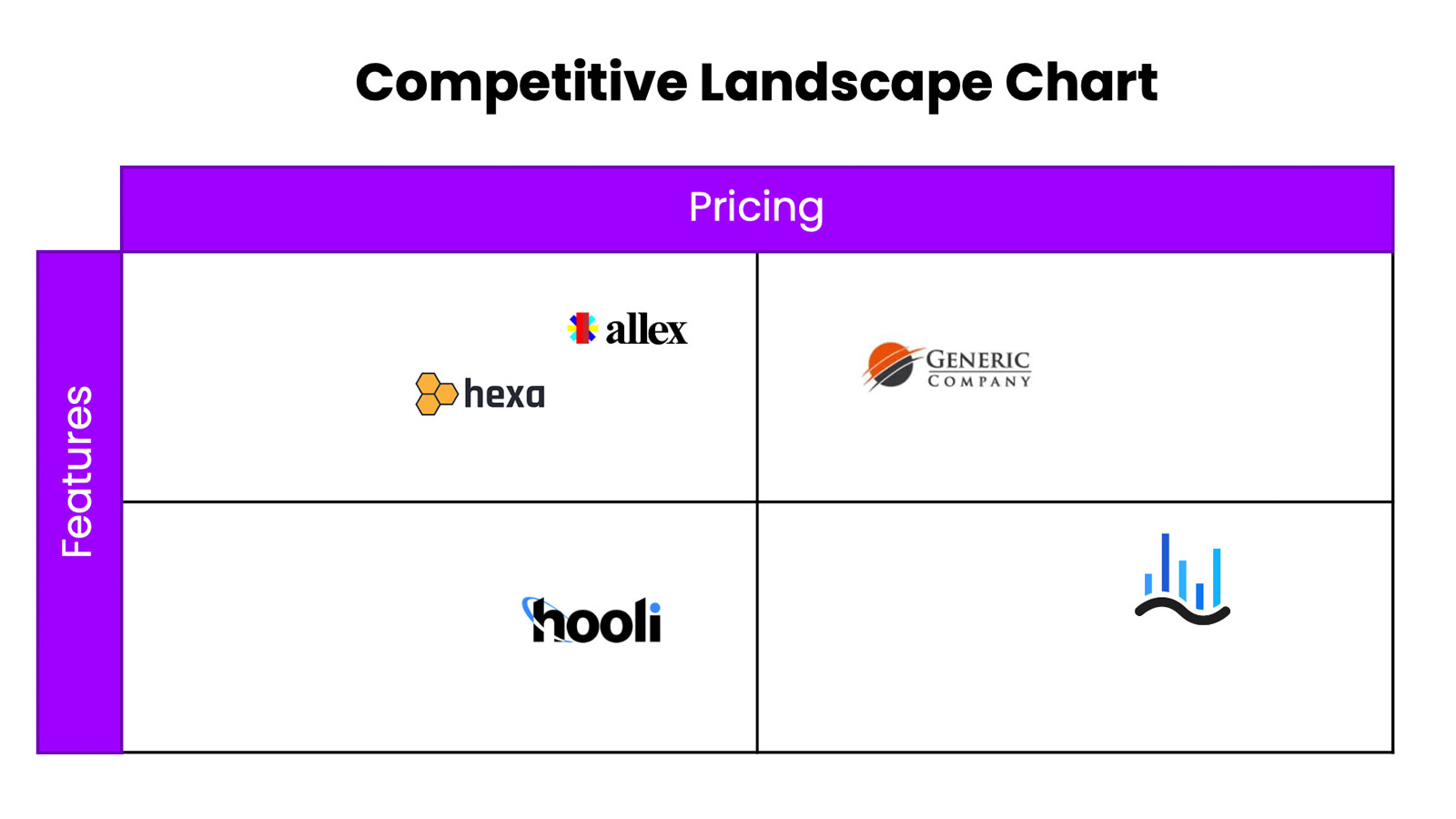
This does not need to be an in-depth session. The purpose is to give your board an understanding of your position in the market, ideally using a visual to make it easier. Remember, a board member might use your slides in their own presentations to LPs and teammates. Including a simple overview of your competitive landscape can help them share your narrative with their peers.
Use This Free Board Deck Template
We made these slides for you…free of charge. We don’t even want your email address.
We just want to help you make your board happy with some of the best marketing performance they’ve ever seen.
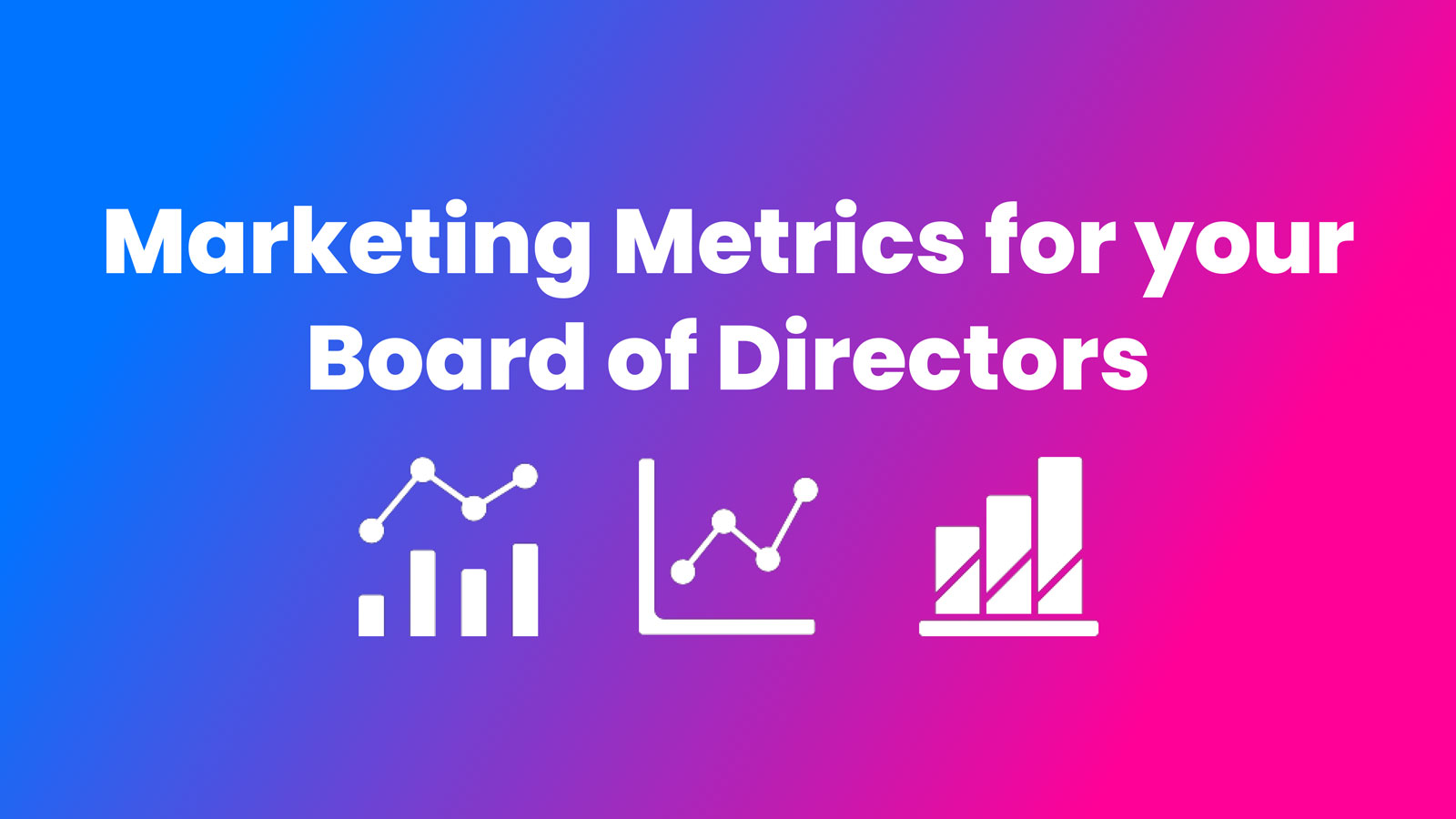
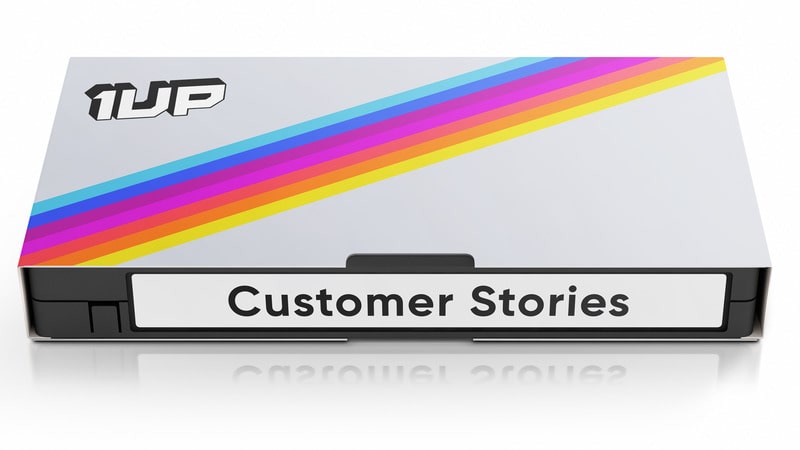


 Instagram
Instagram 




